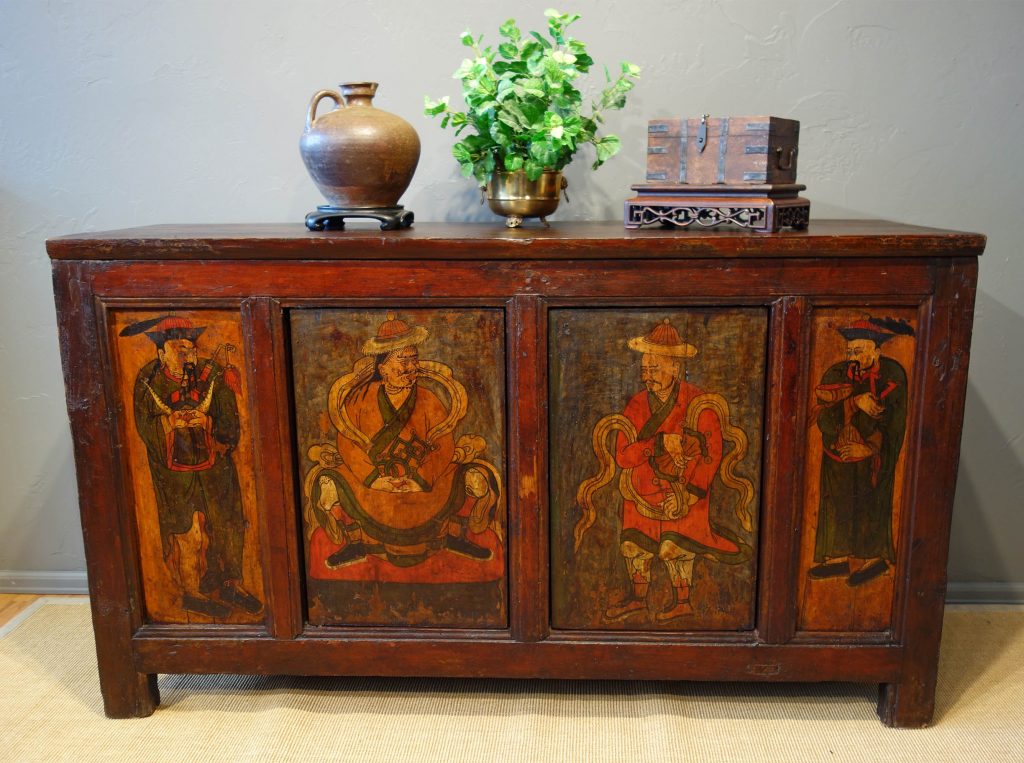
19th C, Pine, Sichuan. Full-figure lama image on furniture is rare, as is antique furniture from this region.
61” W x 19.5” D x 36” H
This Lama Chest is quite rare because there are not many Chinese chests using full-figure lama images as pivotal point, and not many antique furniture is available from Sichuan (literally means “Four Rivers”) due to its geographical isolation, relative inaccessibility, and its virtual self-sufficiency as the region is historically known as the “Province of Abundance”.
The Sichuan Basin and adjacent areas of the Yangtze watershed was a cradle of indigenous civilization dating back to at least the 15th century BC. The province is rich in agriculture, mineral, and textile products. The region thus formed a stage on the trade route connecting the Yellow River watershed with India and the west. Buddhism probably came from India to the area even back then.
The majority of the population is Han Chinese who lives scattered throughout the region and practiced Mahayana Buddhism, Taoism, Confucianism, and Chinese folk religion, but significant other ethnic groups have their own distinct religious beliefs. This Lama Chest is a good example of the importance of religious influence in the life of these ethnic groups. This chest is probably from a Buddhist or Taoist temple, or the residence of a lama.
This Lama Chest is solidly constructed with pine and strengthened with wooden nails. The wide top panel is made from one piece of wood. The side panels are recessed. The thick coat of dark lacquer applied on the surface is now crazed with age and appears leathery, adding character to the piece. There are four panels in front, with the two wider ones in the middle forming doors to a spacious interior divided by a shelf. Each front panel has the image of a lama, all painted with natural mineral colors which helped in preserving the images. Each lama carries an auspicious sign, representing emblems of Buddhism and Taoism. When ribbons are entwined with sacred symbols, they represent the halo radiating from the gods. As with most furniture influenced by its neighbor, Tibet, the value of this chest is in the painting and not in the method of construction. This impressive piece would add interest to any room.